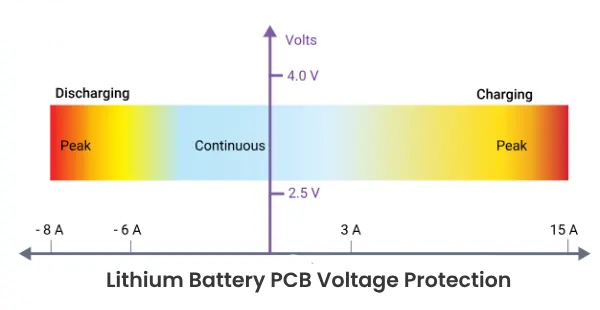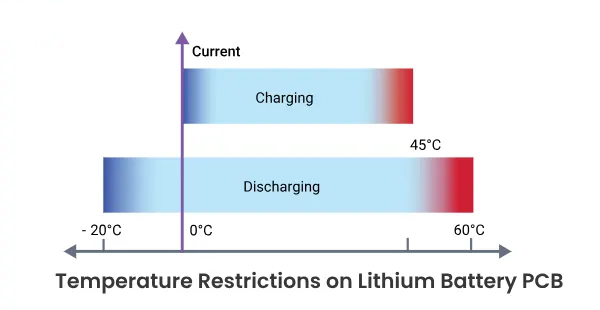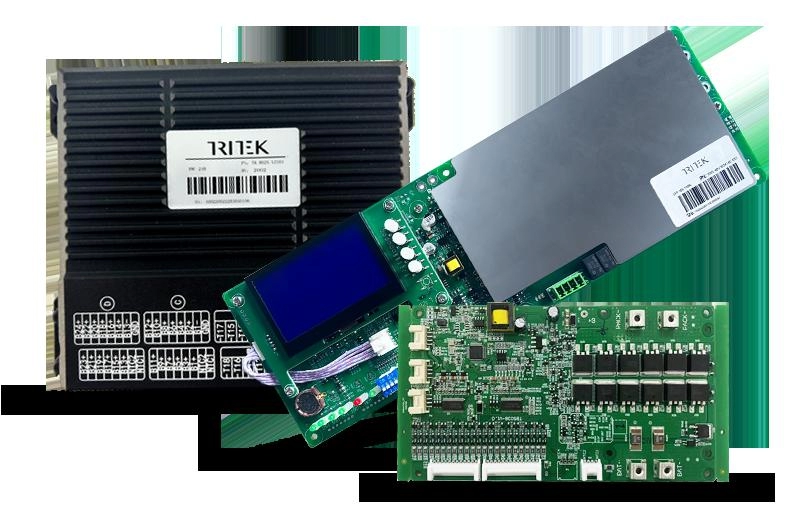As the use of lithium-ion batteries increases in consumer electronics, electric vehicles, and renewable energy storage, ensuring effective protection mechanisms has become more critical than ever. According to the latest industry forecasts, the global lithium-ion battery market is projected to reach $129.9 billion by 2027, projected to grow at a compound annual growth rate (CAGR) of 16.2%. This rapid growth underscores the urgent need for reliable protection systems to ensure the safety, efficiency, and longevity of lithium batteries. A battery PCB (printed circuit board) is one of the most critical components of this protection system, playing a vital role in the operation and safety of lithium-ion batteries.
In this article, we will explore what a battery PCB is, how it works, and the key differences between it and other related components such as the PCM (protection circuit module) and BMS (battery management system). We will also highlight the importance of reliable battery protection circuits and discuss the potential hazards that can arise from inadequate PCB protection. Whether you are a manufacturer, engineer, or consumer looking to improve the performance and safety of lithium batteries, this article will provide valuable insights.
Part 1: What is a Battery PCB and How Does It Work?

A battery PCB is an essential component of *battery* protection systems for lithium-ion batteries and other rechargeable batteries. It is designed to monitor and control the charging and discharging processes of the battery, thereby protecting the battery cells against potential hazards. The PCB integrates a set of protection circuits that prevent dangerous conditions such as overcharging, over-discharging, and short circuits, which can damage the battery or compromise safety.
Part 2: Key Functions of a Battery PCB
1. Overcharge Protection
Lithium-ion batteries are highly sensitive to overcharging. When the voltage exceeds a certain threshold, typically 4.2V per cell, the battery can overheat, degrade, or even catch fire. A battery PCB ensures that the voltage does not exceed this safe limit by cutting off the charging process when necessary.
2. Over-Discharge Protection
Over-discharging a lithium-ion battery (typically below 2.5V or 3.0V per cell) can cause irreversible damage. The battery protection circuit monitors the battery voltage and disconnects the load if the voltage drops below a safe threshold, thus protecting the battery from deep discharge.
3. Over-Current Protection
Excessive current, such as that experienced during heavy usage, can lead to overheating and damage. The PCB includes current sensors that detect high current levels and interrupt the circuit to prevent overheating or fire.
4. Short-Circuit Protection
Short circuits in battery systems can cause catastrophic damage, including fire and explosion. The battery protection circuit detects abnormal current flow and disconnects the battery to prevent damage associated with short circuits.
5. Temperature Monitoring
Temperature is a critical factor for lithium-ion batteries, as overheating can lead to thermal runaway. Many battery PCBs are equipped with temperature sensors to monitor the battery’s temperature. If the temperature exceeds a safe limit, the protection circuit disables the battery to prevent further damage.
Beyond these protection measures, battery PCBs also play a key role in balancing cells within multi-cell battery packs. In multi-cell systems, differences in cell voltages can occur during charging and discharging cycles. The PCB ensures that the cells remain balanced, keeping all cells within a safe voltage range and preventing issues such as overcharging or imbalances.
Part 3: Differences Between PCB, PCM, and BMS
To fully understand battery protection systems, it is essential to differentiate between their components. These include the battery PCB, the PCM (protection circuit module), and the BMS (battery management system), all of which ensure the safe operation of lithium-ion batteries.
Battery PCB
As we have discussed, the battery PCB serves as the core of the protection system. It monitors the battery’s voltage, current, and temperature, providing overcharge, over-discharge, over-current, short-circuit, and temperature protection.
Protection Circuit Module (PCM)
The protection circuit module is a more streamlined form of protection compared to a BMS. While it shares some functions with the PCB, such as overcharge and over-discharge protection, it is generally more basic and less comprehensive than a full BMS system.
Battery Management System (BMS)
A battery management system provides a more advanced and comprehensive protection system for lithium-ion batteries. It goes beyond the functions of a PCB and PCM, offering additional features such as balancing the battery cells in multi-cell packs, managing state-of-charge (SOC) data, and ensuring optimal battery health. A BMS often includes communication capabilities, allowing it to relay battery data to external systems for monitoring and control.
Conclusion
As the demand for lithium-ion batteries continues to grow, ensuring their safety and performance is more critical than ever. Battery PCBs play a central role in protecting these batteries from dangerous conditions, including overcharging, over-discharging, excessive current, short circuits, and thermal runaway. Understanding the functions and differences between PCBs, PCMs, and BMSs is essential for both battery manufacturers and users. By incorporating reliable battery protection circuits, manufacturers and consumers can maximize the lifespan, safety, and efficiency of lithium-ion batteries.
For those interested in learning more about battery types and differences, check out our Lithium Iron Phosphate Battery Manufacturer Ranking. Please feel free to contact us with any inquiries.
Lithium Battery PCB, PCM, and BMS: Key Differences Explained
Part 1: Overview of Battery PCB, PCM, and BMS
Battery PCB (Printed Circuit Board)
Battery PCB is a crucial component that protects and manages individual cells in a lithium-ion battery. It ensures the safe operation of the battery by preventing overcharging, undercharging, overcurrent, and short circuits. This protection is vital for guaranteeing the battery’s efficiency and longevity.
Protection Circuit Module (PCM)
Protection Circuit Module (PCM) is similar to a battery PCB but is often used in single-cell configurations. It integrates the necessary protection circuitry into a module, effectively managing the state/performance of a single lithium-ion cell. PCM functionality is similar to battery PCBs but is generally simpler in structure, suitable for smaller, less demanding applications.
Battery Management System (BMS)
Battery Management System (BMS) is a more advanced and comprehensive solution designed for multi-cell configurations. It monitors and balances the voltage of the entire battery pack to ensure that each cell operates within safe voltage limits. Additionally, a BMS may include thermal management systems and diagnostic features, providing detailed information about the battery’s performance. BMS is essential for large battery systems, such as those used in electric vehicles or renewable energy storage solutions.
Summary:
- Battery PCB: Focuses on the protection and management of individual cells, and can be used in various configurations.
- PCM: A simpler protection solution for single-cell applications.
- BMS: A complex system for monitoring and balancing multi-cell battery packs.
Part 2: Lithium Battery Protection Circuit
A typical lithium battery protection circuit consists of several essential components such as voltage regulators, transistors, resistors, and microcontrollers. The protection circuit is designed to maintain safe voltage levels, ensuring the battery operates within the manufacturer’s set limits. For example, most lithium-ion batteries operate between 3.0V and 4.2V per cell. Exceeding these voltage levels can lead to dangerous safety issues, such as overheating, leakage, or even fire.
Main Protection Functions:
- Overvoltage Protection: Prevents the battery from charging beyond its maximum voltage, which can lead to catastrophic failure.
- Undervoltage Protection: Prevents the battery voltage from dropping below a safe threshold, prolonging battery life.
- Overcurrent Protection: Prevents the battery from charging or discharging at an unsafe rate.
- Short Circuit Protection: Protects the battery from damage caused by electrical short circuits.
These protection functions are integrated into the Battery PCB, ensuring the safe operation of the battery throughout its lifecycle.
Part 3: Technical Aspects of Battery PCB Design
When designing a Battery PCB, several key factors must be considered to ensure optimal performance:
- Current and Voltage Handling: The PCB design must accommodate the current and voltage requirements of the battery.
- Fault Protection: The PCB should include fault protection mechanisms, such as thermal protection devices, to prevent overheating and damage.
- Durability: The materials used in the PCB must be robust enough to withstand environmental stresses, such as humidity and extreme temperatures.
- Compact Design: The PCB design should be compact to efficiently utilize space within the battery pack, without impacting the battery’s energy density.
If you need a custom-designed battery PCB, KHZH can provide customized battery PCB solutions.
Part 4: Consequences of Not Having a PCB
Without a Battery PCB, lithium-ion batteries are vulnerable to numerous issues. The lack of a protection circuit increases the risk of overcharging, deep discharging, and overheating, which can significantly shorten the battery’s lifespan or lead to hazardous situations.
In the absence of proper protection, lithium-ion batteries may experience voltage fluctuations, leading to capacity degradation. In extreme cases, this can result in thermal runaway, which can potentially cause serious safety hazards. A Battery PCB ensures the safe operation of the battery, thereby improving performance and longevity.
The Importance of Battery PCB Protection Boards
The absence of a PCB protection board can severely compromise the safety of batteries and their surroundings. Without this crucial component, the risk of battery failures, such as fires or explosions, significantly increases.
For instance, a simple overcharge can cause the electrolyte inside the battery to decompose, potentially leading to leaks or swelling. This poses a serious safety hazard to the device or vehicle powered by the battery. Therefore, a battery PCB protection board is essential for ensuring safety and optimal performance, not just a precaution.
Common Signs That Your PCB May Need Repair or Replacement
Like any other electronic component, battery PCBs can degrade or fail over time, especially when exposed to extreme conditions like excessive heat, humidity, or overuse. Here are some signs that your battery PCB may need maintenance or replacement:
- Frequent Battery Overheating: If your battery consistently overheats during charging or discharging, it could indicate a malfunction in the PCB’s protection circuitry. Improper temperature management by the PCB can lead to serious safety issues.
- Abnormal Charging or Discharging: Erratic charging or discharging behavior, such as rapid charging (kuài sù chōng diàn) or failure to charge, may suggest a faulty PCB. If you notice irregular performance, it’s worth inspecting or replacing the PCB.
- Battery Swelling or Leaking: Battery swelling or leaking is a severe indicator of failure, often resulting from the PCB’s failure to properly protect the battery cells. If you notice swelling, you must replace both the PCB and the battery immediately.
- Short Circuit Warnings: Error messages or warnings related to short circuits or abnormal current flow can indicate a damaged PCB that requires replacement.
Troubleshooting and Repairing Battery PCBs
If you suspect a faulty battery PCB, it’s essential to follow a step-by-step troubleshooting process. Here’s a simple guide to help you diagnose and fix issues:
- Visual Inspection: Begin by inspecting the PCB for any visible damage. Look for burnt components, broken traces, or signs of moisture. Any damaged parts should be replaced.
- Voltage Testing: Use a multimeter to check the voltage at various points on the PCB. If the voltage readings deviate from expected levels, it may indicate a fault in the voltage regulation or protection circuitry.
- Check for Short Circuits: Short circuits are a serious concern in battery PCBs. Use the continuity function of a multimeter to check for unintended shorts between different parts of the circuit board.
- Component Replacement: If you identify faulty components, such as resistors or transistors, replace them with compatible parts. However, if the damage is extensive, replacing the entire PCB may be more cost-effective.
Future Development Trends of Lithium Battery Protection Boards
- High Integration: Lithium battery protection boards will become more highly integrated in the future. This will produce smaller and lighter units to meet the needs of portable devices. High integration can also improve the reliability of the protection board and reduce its failure rate.
- Multi-functionality: Future protection boards will offer additional functions beyond basic overcharge, over-discharge, overcurrent, and over-temperature protection. These may include power estimation, balanced charging, etc.
- Intelligent Function: As battery technology advances, protection boards will become more intelligent, offering smarter management and adapting to various charging and usage scenarios, such as dynamically adjusting charging strategies based on battery aging.
Trends in Lithium Battery Protection Board Development
With the continuous development of technologies such as the Internet of Things (IoT) and cloud computing, future lithium battery protection boards will become increasingly intelligent. By integrating with smart devices, these protection boards will be able to monitor the battery status and environmental conditions in real time, thereby enhancing user convenience and safety.
In addition, through big data analysis and artificial intelligence (AI) technology, protection boards can achieve intelligent battery management and extend the battery’s overall lifespan.
Enhanced Safety Performance
With the expanding application range of lithium batteries, the demand for enhanced safety performance is growing. Future protection boards will prioritize safety by employing advanced detection and control technologies to ensure the safe operation of batteries.
Use of Environmentally Friendly Materials
With the increasing awareness of environmental protection, the application of environmentally friendly materials in lithium battery protection boards is gaining increasing attention. These environmentally friendly materials not only contribute to sustainable development but also help reduce production costs, thereby promoting the sustainable development of the lithium battery industry.












